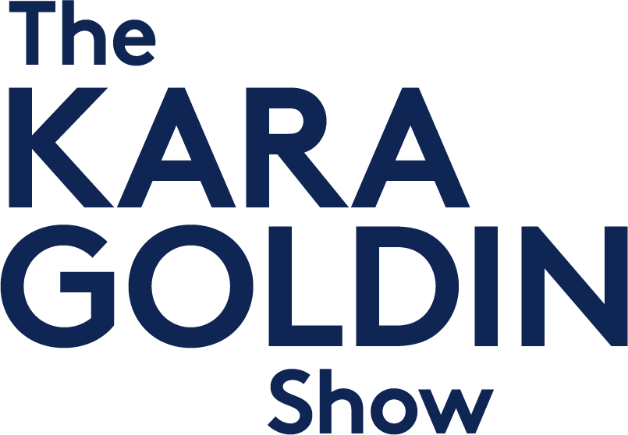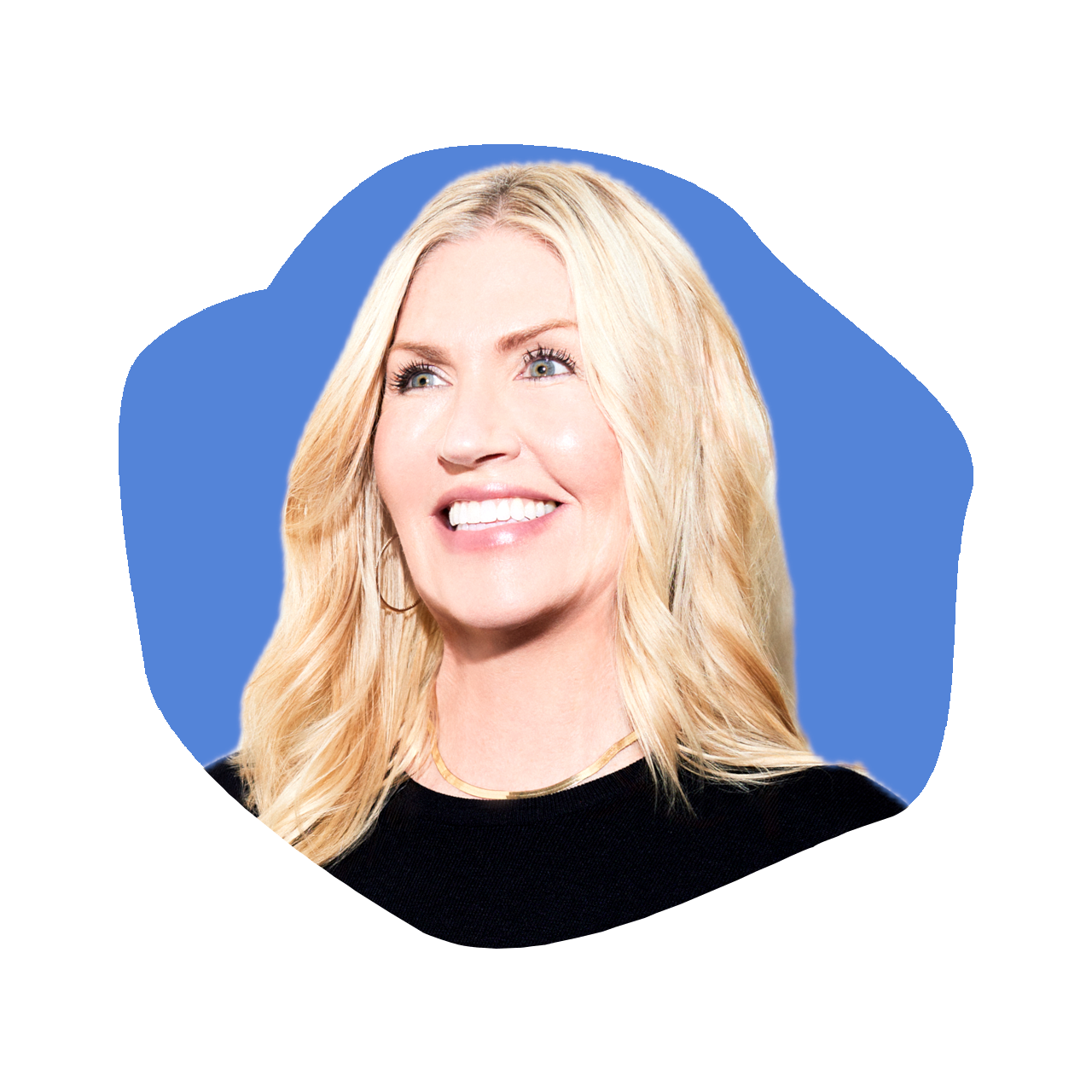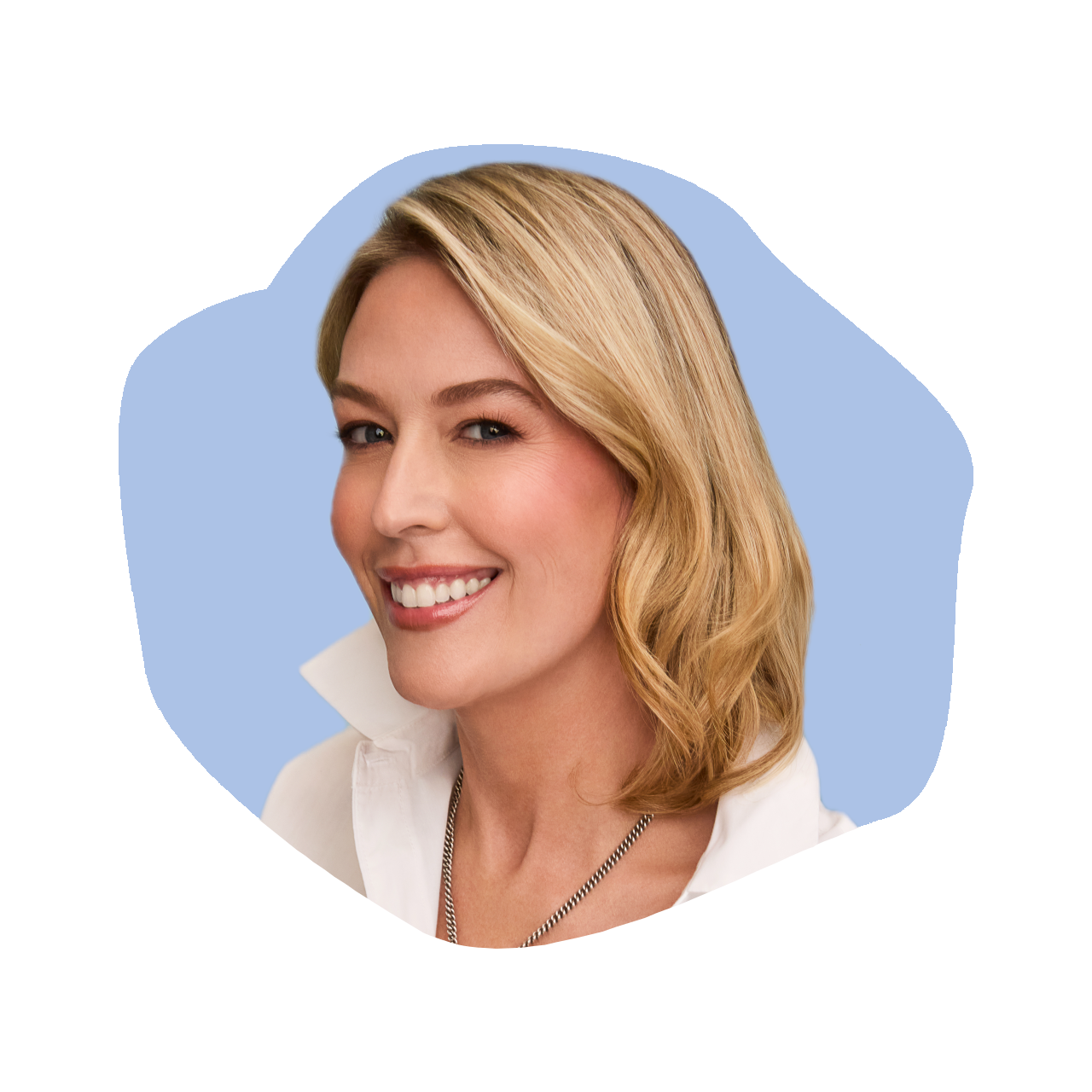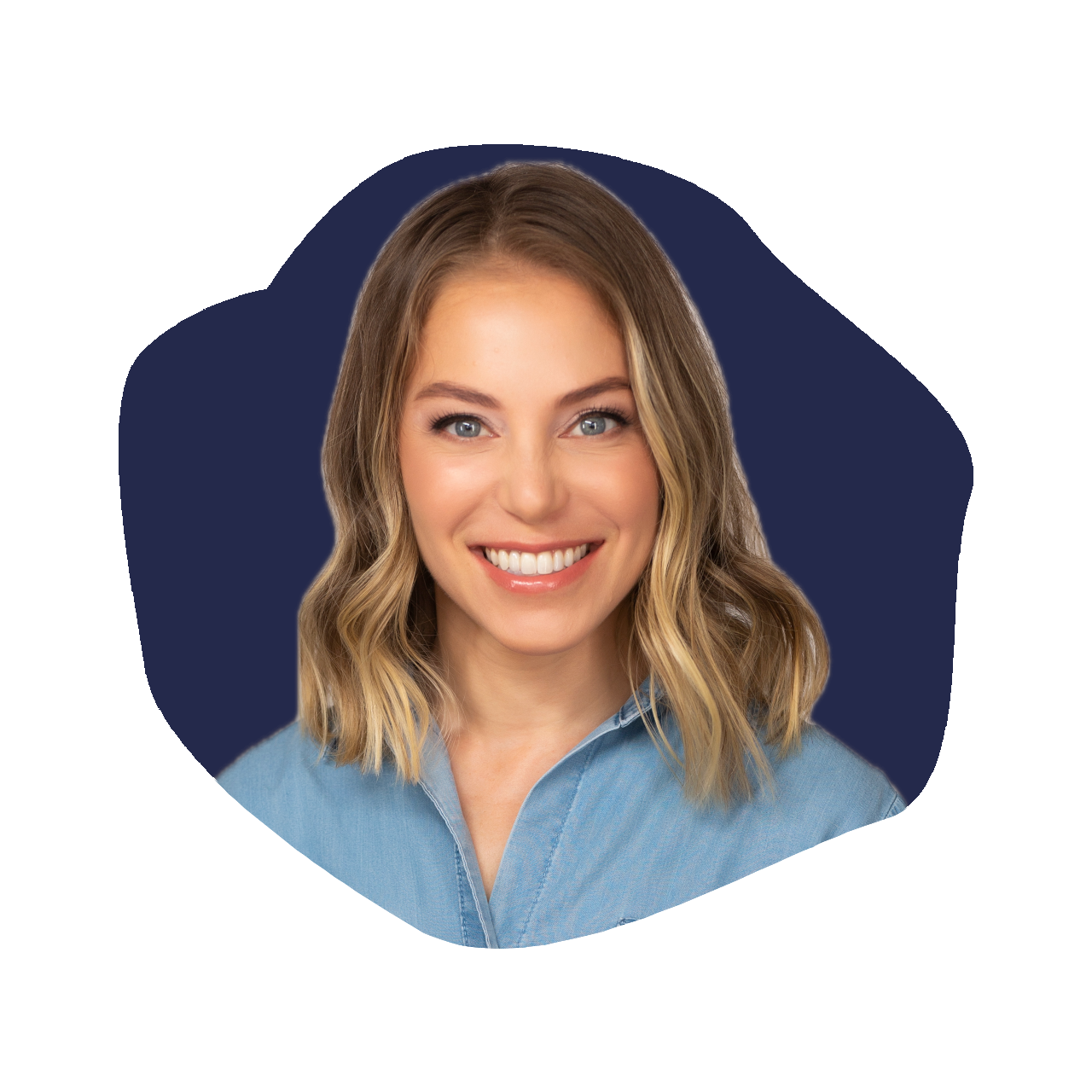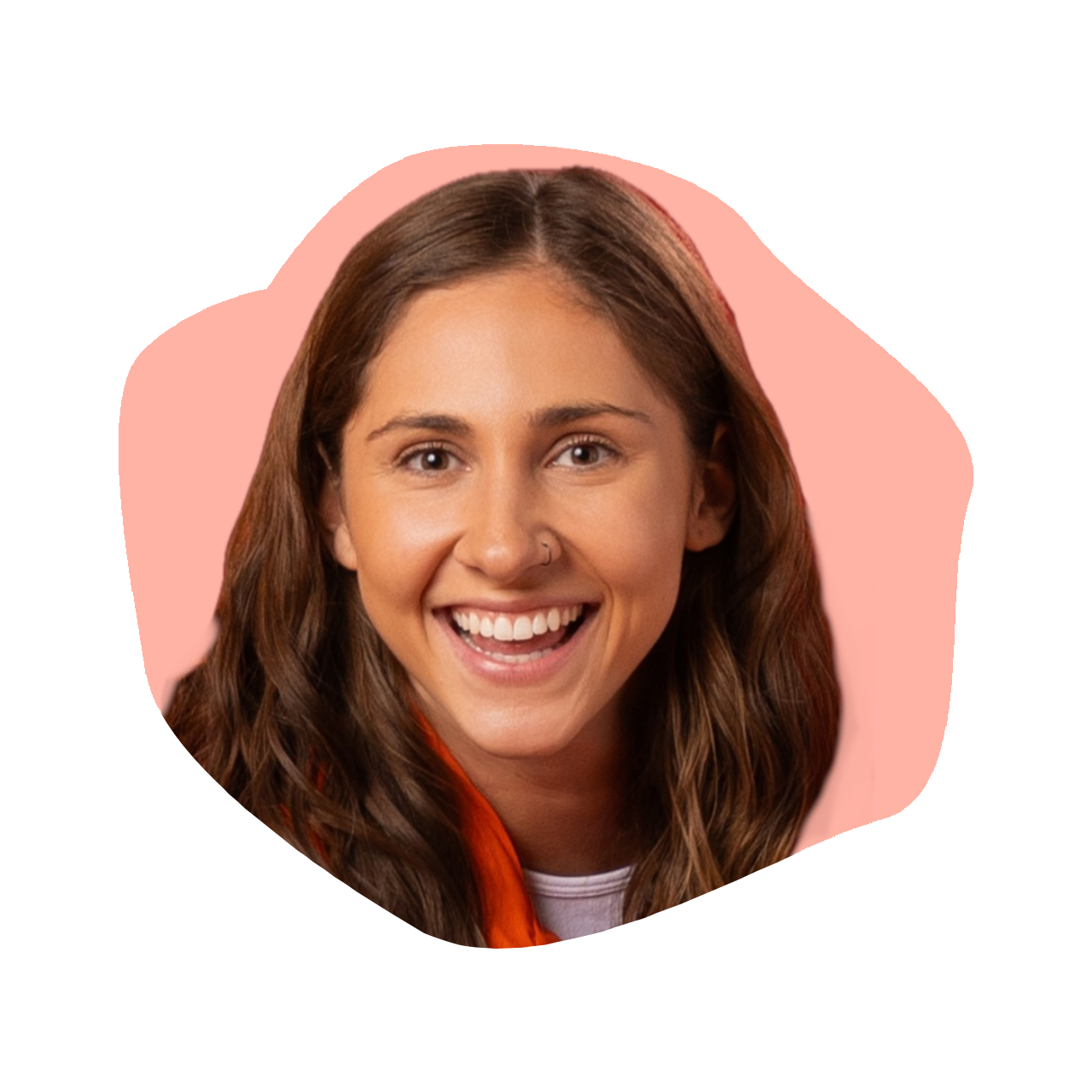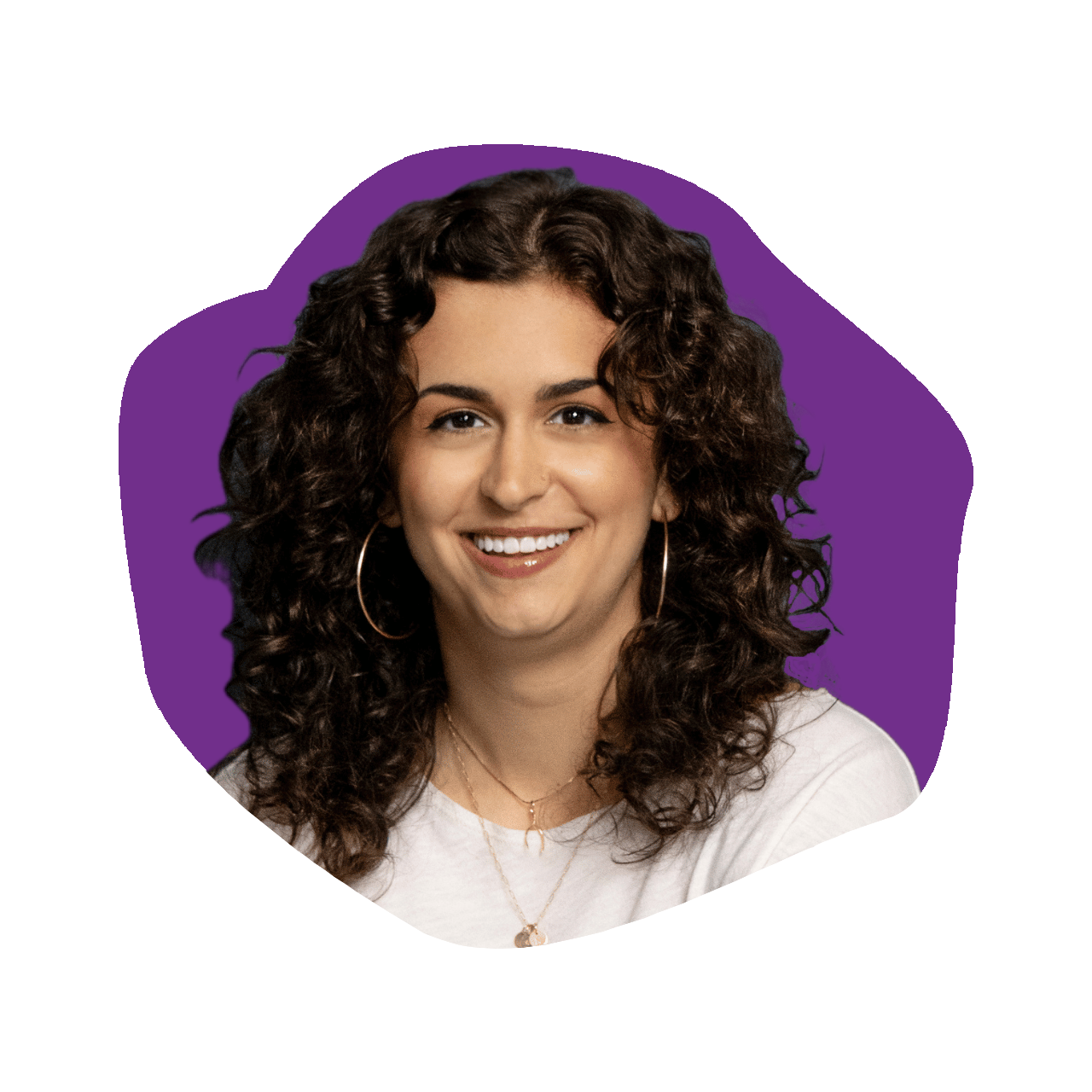Danny O’Malley: Founder & President of Before the Butcher
Episode 724

On this episode of The Kara Goldin Show, I’m joined by Danny O’Malley, Founder and President of Before the Butcher—the plant-based meat company that’s changing how America eats. After a successful career in the food industry, including a senior role at Beyond Meat, Danny launched Before the Butcher in 2017 with a bold vision: to make plant-based meat more diverse, more accessible, and just as craveable as the real thing.
Since then, Before the Butcher has introduced one of the largest portfolios of plant-based meat alternatives in the industry, spanning everything from burgers and sausage to pulled pork and chicken. Danny has also led the charge on affordability with Mainstream by Before the Butcher, the first plant-based meat priced competitively with traditional meat—breaking new ground in the industry.
In our conversation, Danny shares his founder journey, the big lessons from scaling in a fast-growing but often misunderstood category, and how he's built a brand rooted in trust, transparency, and innovation. We also talk about pricing strategy, product development, what it takes to stand out in a competitive market, and what he sees coming next for the plant-based space.
If you’re curious about the future of food, how to build a brand with values, or what it’s like to lead through disruption—this episode is packed with insight. Now live on The Kara Goldin Show.
Resources from
this episode:
Enjoying this episode of #TheKaraGoldinShow? Let Kara know by clicking on the links below and sending her a quick shout-out on social!
Follow Kara on LinkedIn – Instagram – X – Facebook – TikTok – YouTube – Threads
Have a question for Kara about one of our episodes? Reach out to Kara directly at [email protected]
To learn more about Danny O’Malley and Before the Butcher:
https://www.instagram.com/beforethebutcher/
https://www.linkedin.com/company/before-the-butcher/
https://www.linkedin.com/in/danny-o-malley-790251a/
https://beforethebutcher.com/
Transcript
Kara Goldin 0:00
I am unwilling to give up, that I will start over from scratch as many times as it takes to get where I want to be. I want to be you. Just want to make sure you will get knocked down. But just make sure you don’t get knocked out, knocked out. So your only choice should be go focus on what you can control. Control, control. Hi everyone, and welcome to the Kara Goldin show. Join me each week for inspiring conversations with some of the world’s greatest leaders. We’ll talk with founders, entrepreneurs, CEOs and really, some of the most interesting people of our time. Can’t wait to get started. Let’s go. Let’s go. Hi everyone, and welcome back to the Kara Goldin show. Today’s guest is someone who’s helping reshape the way we think about food, specifically how we can eat better, more sustainably, and still love every bite and the product is called ready for it Before the Butcher and I am so excited to meet Danny O’Malley. The plant based meat company is awesome. The products are awesome, and they are meat alternatives, but kind of a different focus than maybe some of the others that are out there, so we’ll get into that. But Danny took his deep experience in the food industry over 25 years, including being at a another plant based meat company, and launched Before the Butcher in 2017 and since then, the company has rolled out a full line of plant based proteins, from burgers and chicken to to pull the pork and sausage, winning multiple awards. And he’s also the the mind behind mainstream by Before the Butcher, the first plant based meat product price to compete directly with traditional meat. So much going on for him, and I can’t wait to talk about the founder story, the evolution of the plant based movement, and what it really takes to build and scale an incredible company like Before the Butcher so welcome. Welcome. Danny, how are you?
Danny O’Malley 2:17
I am doing good, and I am so happy to be on the show with you, and I’ll tell you about my journey. You you shoot the questions out and I’ll answer them.
Kara Goldin 2:26
I love it well. I love Before the Butcher. So you have done an awesome job of creating incredible, incredible products. So let’s start with the founding story. What sparked the idea for you to actually go and create Before the Butcher?
Danny O’Malley 2:44
Well, I’m going to take you back about 10 years now, level, almost 11 years now, and I was in a corporate job at a large food service distributor, and I was doing well there, but I just it wasn’t me, if that makes sense, I really needed something that defined who I was and what I wanted to be, and I didn’t really know what that was. I mean, we all live in a gray zone, right? And we have to find out what our black and white is. We have to discover and make decisions that will change our life, and hopefully it changes our life in the right way. So I was sitting in my office one day, and I set an appointment with the top salesman for Beyond Meat, and he came in to talk to me, this was in Southern California, and he said, Hey, Danny, I’m struggling here. You know, we’ve got a product that should do really well in Southern California, but you know, we don’t seem to be doing as well as we thought we would be. And keep in mind, this is very early in the game. This is almost 11 years ago, and people didn’t really know who Beyond Meat was, way before the beyond burger and impossible came out with their burger. And so we sat down and we talked, and I had heard of the company, but I didn’t know much about it. And we started talking, and we kind of hit it off. And after, you know, a short while, I said, Hey, I’ll do what I can to help elevate the product and get it in front of our sales team so we can sell some more with you. And on the way out, he said, Hey, one other thing I’m, you know, we’re looking for, you know, somebody to help me with sales. It’s just me and I’m on the East Coast. We want somebody on the West Coast. We’ll kind of make meet in the middle, but we got to, you know, we’re looking at grow this brand, and we’re looking for somebody to help us do that. And so I said, Okay, I’ll, I’ll think about who you know, I know that might be able to help you there. And he walked out the door. And I sat there for a few minutes, and I thought to myself, I know who that guy is. That’s me, right? And so I called him back a couple hours later, and I said, Hey, look, I think I’ve got the perfect guy. In fact, I know I have the perfect guy. And he says, Well, who is it? And I said, it’s me. He. Says, I didn’t want to say anything to you, because you’re in an executive position here at this company, and, you know, it’s a very different position, but I thought you would be perfect, too. And so I got in front of the founders of the company, and within a week, I was hired, and within a couple of weeks, I was working for a startup, you know, and you know, it was a huge risk. I mean, it took a pay cut. I went to a place that was most people didn’t know who they were, but it fit within my lifestyle, and it fit within what I wanted to do and where I wanted to go. I didn’t know at that time that I was going to start my own company. I just knew that this was something exciting. It’s something that I, you know, fit well within my lifestyle and who I was as a person, and I went for it. And then it didn’t take take long before I realized that this really was an opportunity, that that this industry was going to break open soon, and and that there was a lot of interest. People just didn’t know what we were doing, why we were doing, how we were doing it. And that was the conversation, really, for the first couple of years that nobody was buying from me. They were like, What are you doing and why are you doing this? How are you doing this? And so, as you know, over the years, that’s changed. Now it’s completely different. But a couple of years in, I found myself getting anxious and realizing that I wanted to make some decisions myself, and I wasn’t in that position with beyond. I was in a position to go out and sell what they made and whatever they decided to make. And I got a little frustrated with it, and thought, I think I can do this. As you know, a true entrepreneur at the very beginning, you think you can do anything, right, right? The world is your oyster. Like, hey, who’s gonna stop me? Look, I know what I’m doing. I can go out and do this. Well, it’s a lot more complicated than that, but if you keep it simple, you can make almost anything work. That makes sense, right? And it certainly made sense, and I was really excited about that. I put together a great team, and here I am, eight years later, and a lot of companies have come and gone, but we’re still here, and I’m really excited about the future of what we’re doing and how we’re doing it, and we have a lot of opportunities, even today, and we’re going after
Kara Goldin 7:11
it. I love it well. I love the enthusiasm and the energy. And thank you so much for creating this incredible company, but also for sharing that part of the story. So when you saw this gap in the market, you mentioned that you were working at this company who had a focus on one thing, what was the gap that you really saw that you thought they’re not going to do this, at least not now. So this is what I need to go and do.
Danny O’Malley 7:43
Well, I had two things at the time, actually. One was we were going to make products that really had a tremendous bite and chew and texture. The flavor part was a little bit easier than the texture part is, and that’s what people recognize when you try one of these products, and our products are meant to mimic animal based proteins. If you bite down on a little piece that I’m calling a beef tip, right or a chicken chunk, you’re going to expect a certain bite to it, because that’s what you’re familiar with when you eat before you eat chicken. So that was our goal from the beginning, was to have a texture that people recognize right away. It’s like, yeah, that that’s chicken, you know, that that bite and that texture is like chicken, or it’s like beef, or it’s like pork. And I think we did a really great job of that. And then we came up with beef tips, chicken chunks, chorizo, and these are all the plant based versions of what we know on the animal based side right, sausage crumbles and regular beef crumbles. And so we had a half a dozen products right away that were really focused on texture more than anything. Now, the flavor that was there, delicious products, you know, I’ll tell you how good they are. We’re still making them today, and after eight years, that’s a long time in terms of food, to be making the same product. That means you’ve done something right along the way, right? And so that was really our focus. The advantage we had at that time was there were only a couple of companies doing these kind of things, you know, and we were doing some products that nobody else was doing. So you had beyond. You had impossible. They had just launched their burgers. It was all about burgers to them at that time. So we were making products that were different, and I just grabbed onto their coattails because they were spending 10s of millions of dollars on marketing, PR, advertising. I didn’t have that kind of budget. But people knew beyond they knew, you know, they knew impossible, and they also knew that those companies were growing so fast they couldn’t scale up fast enough to meet the needs of the market. So we grabbed on, we made products, and when somebody said, Hey, I’m frustrated because I can’t get the product, I said, I have it. And we were able to grab. Of that business. And so we had two things. One is, you know, we had the advantage of larger companies basically advertising the products that we were making for us, not under our name, but telling people, Hey, opening up the door and saying, Hey, there’s this product out there you should take a look at, right and this. The second advantage is, we had a really special product. Now, Kara, you had a chance to try it. I’m glad you had a chance to try it. I think you would agree. It’s that texture of the product that surprises you when you bite down. It’s like, this is very similar to what I would eat if I’m eating chicken, beef or pork.
Kara Goldin 10:37
Yeah, definitely. Is there one of one skew that is kind of the runaway hit, or is there? Or do you find that there are a couple of them that there
Danny O’Malley 10:48
actually is? We’ve got a couple of really great skews, but there’s one runaway hit, and ironically, it’s the one that I told my team that I wasn’t really interested in at the beginning. Of course, of course. You know what I’m saying. It’s our chorizo. And I said, Hey, I when we were building what I see as kind of a premium brand for these type of products. I said, I don’t want to compete against the the soy based Teresa on the market today, like sericea, which is, you know, very inexpensive. I said, we have a premium product. You know, if I say, hey, their product is two bucks and I’m charging $4 a pound, they’re going to say, we’ll take the $2 a pound, right? What we discovered really quickly was exactly what we were trying to accomplish from the very beginning is that we had such a unique product that had such a tremendous bite and chew and texture and flavor to it that people couldn’t believe it wasn’t real chorizo to start with, and it just took off. And it was a slow build, but in the last couple of years, it is just that product has ramped up so fast. You know, a couple of times I thought, are we going to be able to make this fast enough, but we are. Fortunately, we’re able to scale up, and I’ve got a really great sister company that we work with that helps us make our products, and so they make the capital investment in our plant and and we make the products, and they’re just fantastic.
Kara Goldin 12:17
That’s incredible. So mainstream by Before the Butcher, can you talk about that line as well? And, and what is it? And why did you decide to build this as well?
Danny O’Malley 12:33
Well, main, you know, you know, one of the challenges we have, the entire industry have, and have had since the very beginning, was pricing. You know, it is not inexpensive to make these products, and people think that just because we’re making it with plants, that it’s going to be, you know, a cheap product, and it and it’s not so for us to compete with industries that are subsidized by the government. It’s a little difficult because we’re not so the meat industry, that the poultry industry, the pork industry, they all get help from the government, and we’re in an industry that doesn’t get help. In fact, sometimes there’s even a wall that goes up that blocks us and makes it even more challenging. So as we’re developing these products, I’m thinking to myself, and this is probably later part of the covid years, so, you know, 2021 2022 and everybody was concerned about pricing even then, and the challenges of getting product to the market and the supply chain and all that kind of stuff. And I said to my team, I said, look, let’s see if we can find a way to produce a burger that will really hit the mainstream in a way that the pricing is going to be competitive with a normal quarter pound 8020 burger that Chuck you know, that hits the market. And you know, the fluctuation in pricing for us isn’t as deep or is erratic as the meat industry. It can be up, it can be down, and, you know, it bounces around depending on supply and demand on their end as well. And there’s a lot more product being imported now, I believe, than what’s being made or grown here domestically. So the market’s changing on the meat side, and prices are going up. So we thought at some point in time we’re, you know, there’s going to be a balance. They’re going to go up so much, and we’re going to be able to bring our price down, and then we’re going to be at that sweet spot where, hey, look, you can have this beef burger for 595, or 695, or 1295, or you can have the exact same thing, plant based for the same price, and we’re competing because our price is that price the same price as theirs? Well, I was able to do it. We went in there and we analyzed how we could lower our price and still with quality ingredients. And fortunately, we were already at a place where we had scaled up and reduced our costs. I. On the production side. So we were able to balance those two and then come out with mainstream, which is a burger that competes directly with ground beef on a on a regular basis for any other operator that’s looking to buy a product that isn’t going to cost them more and they don’t have to charge their customer more for and it’s pipe based. So we were able to do it. It was, it was, it was a challenge for us. It probably took us about a year and a half to get the point where we really were able to develop a really high quality product that was very competitive price wise. In fact, I’ll tell you a really interesting story that product superseded and and we bumped our regular burger off the list of products that we make now and mainstream is our burger. Oh, so we lower the price. Which is, and it’s, it’s this product now is a good 25 to 35% less expensive than any other product that competes with it on the market for plant based burger. And that’s a big, big difference in price,
Kara Goldin 16:01
so interesting. So your go to market strategy when you know right out of the gate, how many SKUs did you have, and were you more focused on food service or or retail, direct to consumer? What were you doing? And how has that changed? Today, we
Danny O’Malley 16:19
started food service, that really was my experience. Had some people on the team that had experience in retail, but we, I knew we could attack food service a lot easier and faster. So that’s what we what we went after. I you know, we started the company September 1, 2017 we were in distribution and already getting out to restaurants and food service operators by April of 2018, so that’s that’s developing the product, packaging the product, getting the product into distribution, and getting that distribution down to the operator level. That’s pretty quick. I think I don’t know anybody that has moved very fast, yeah. So fortunately, I had some pretty good connections in distribution and and we were able to take advantage of that. And then I also had some good connections on the operator side, and I pressed from that side forward. And then I had a great team that developed some products very quickly for us. So a lot of things were spinning really fast at the beginning. And it was, it was, it was an exciting time. I’ll tell you back back in, 2017 2018 2019, you know, before covid hit, that was, everything was on fire, you know. And it was, you didn’t want to put that fire out. You wanted to go with it. And it was something else, a lot of fun.
Kara Goldin 17:41
Well, you were also starting this company at a time when I think the, you know, the meat eaters, I guess I’ll call them, were they were more open to not just defining themselves as as a, not a vegetarian, right? Maybe they would take one day and just make this decision that they were going to be having a plant based meal. So how did that come about? By the way, where people were, you know, there was, there was, I think it was Monday. Was it? Yeah, Meatless Monday. Like, how did that all come about and and how do you think that has helped your company to to grow to what it is today?
Danny O’Malley 18:31
Well, I think there were a combination of things, you know, that was also that time. If you remember, we’re going back 789, years ago, there was a true elevation of concern about our climate and how it was affecting the planet, and how it would affect us as human beings living on this planet and other animals on this planet as well. So we had a couple of things working for us, you know, and our mission and vision is kind of wrapped around that, and that that is obviously providing products that are healthier for us to eat than animal based proteins. And that’s a that’s a stated fact. I don’t think anybody would deny that fact, and then that the fact that we use so much less in resources to make our products. So again, better for you, better for the planet. And then the last one is obviously better for the animals. If you’re not slaughtering an animal and that animal is surviving, that’s better for the animal, right? So that it was all kind of intertwined, and what we had was a generation that was growing up, the millennials, and saying, Hey, we want to be able to control our destiny and how we eat and how we live and we, you know, as our children grow in many years to come, we want them to be able to grow and live on a planet that’s healthy, and our our planet is not that healthy. So you. Fortunately, all these things were kind of triggered at a similar time. And so people were thinking about that. They were thinking, hey, look, if I can make an impact by eating less meat, right? So instead of eating meat seven days a week, I eat meat five days a week, will that make a difference? Yes, it’ll make a difference. And people started thinking about that. And so now we have generations. Which is really interesting is the these generations that we have now, which is, I guess we’re down to Alpha Gen. There’s, there’s, you know, obviously we know there’s the Z Gen, and now alpha, and then I guess the babies today are beta. That’s what I heard late, late, wow. I have not heard that, but these generations today, we don’t have to educate them anymore. They already understand. They know they’re making choices based on what they already know that obviously, you know, the boomers, the X Gen, even the millennials, had to be educated as to what this was about and how we were going to help the environment and your health and the animals and all that together. But it’s not really that time that I used to spend. I would spend 80% of my time telling people what we’re doing, why we’re doing and how we were doing it. I don’t have to do that anymore. Now it’s like, try the product. I want to try it. I’m going to see what it’s all about and and you don’t have to spend time talking about why this is better for you and better for the environment and the animals. So it was, it was a really unique time, and we transitioned through that, and the industry has already had ups and downs in this very short period of time. We’ve had our ups and downs and, and I think what’s happening now is we’re now going through what I I said we should have probably gone through at the beginning, which is a really grassroots movement where people that truly understand and want to be a part of this are part of it, and the growth will be natural now and not so forced as it was, because there were 10s and Hundreds of millions of dollars poured into the industry and spent on PR and marketing and influencers and sports stars and movie stars and all that kind of stuff. And as we know, just because you have 50 million followers, you know it doesn’t sustain. What it does is it’s a it’s a fast impact. And then people say, what’s the next thing? Right? Oh, now I’m promoting this. Okay, I’ll try that. Forget about this. I’ll move on to the next thing. And that’s kind of what happened in the industry. And now what we’re seeing is just, just what I see as natural, sustained, organic growth. And that’s what’s healthy for us and for the planet as well. We’ve got to we can’t stop focusing on what’s important.
Kara Goldin 22:44
Yeah, definitely. So you mentioned that the plant based space obviously is a very crowded and competitive space, but when you think about launching a brand in a space that’s crowded and competitive, and you see other products coming out, maybe other products that are kind of similar to you. How do you feel about that? What do you do as a founder, right? Because we’ve all had these moments where you’re like, oh, shoot, they’re launching, you know, something. But as I’ve always, I’ve always felt that, you know, we can only do what we do right and and we just have to keep you know, doubling down and getting the word out about our product and making it better. But often people focus on sort of what other people are doing. How do you think about that? As a founder, as a as a leader? I guess, because I think it’s a really, really important point that a lot of founders just don’t really do.
Danny O’Malley 23:47
Yeah, well, I know I can control my black and white, the gray I can’t, you know. So I do what I do on my side. I’m always interested what my competitors are doing. You know, it’s encouraging to see my competitors out there making products that may be unique or original or special, and I’m always excited about that. But when I see a product that competes directly against something that I’ve kind of had a little bit of a niche in the market for, and that actually happened just recently with the two big players in the market, both made a product that I’ve been making for seven years that nobody else was really competing with us. It wasn’t a gigantic seller. It was, you know, in maybe in our top 10 of products that sell. But it’s still, I still look, I go, Oh man, now look at this. Okay, so we’re I, what I do know is we have a very diverse product list, and one product isn’t going to we’re not going to die on one product. And we’re always developing new products and products that we think are. Unique and special, and that will be accepted in the marketplace in a way that will help us grow the company. So if you, if you sit back and worry about everything your competitors are doing, I think you’re going to put yourself in an early grave. You just have to focus on what you can do, and after that, there isn’t anything else. And I, again, for us, the unique thing is, is we, you know, we developed six products right out the gate, and we still have those six original products, and that that’s a good sign, you know, we’ve, I’ve developed other products since then that haven’t made it, that we pulled off the market, and some that we thought were going to be absolutely fantastic, and didn’t it, and then we had others that we thought, okay, yeah, there’s we can do okay with this. And they turned out to be, you know, one of our top products. So it’s, it’s a tough call, and I think if you worry about your competitor, you’re not focusing on yourself, and that’s what you should be focusing on.
Kara Goldin 26:04
I love I love that advice for sure. So when you think about breaking into kind of national distribution versus staying local, you know that’s always when you’re scaling a brand, that’s always something, no matter what the category is. How do you think about that? And is, is it, you know, when is the moment when you should go into, you know, depending on the category, the big, you know, targets or Walmarts or Costcos, versus, like, staying in your local, regional store.
Danny O’Malley 26:44
Well, we, what’s interesting is we, you know, we focused on food service out the gate, and then we, then we jumped into retail in 2019, and retail was very hungry for these type of products at that time. I mean, nobody it couldn’t. You couldn’t make it fast enough for retail at that time. And it was only beyond that. Was actually in the markets with these alt meat specific products. There were some other vegetarian brands that had been around for many years that were trying to do products that were similar to this. But it was really beyond impossible. Hadn’t hit the markets yet. They were looking to do that as well, and so we focused on getting our products into retail in 2019 and the exciting thing at that time is, you know, Kroger Albertsons, Whole Foods, sprouts, everybody wanted it, right? It wasn’t a question of whether or not they will take it. There’s like, how fast can you get it to us? How can you develop how fast can you develop this and put it on the market? Right? And they, they weren’t worried about you paying for shelf space or anything back then. That’s a lot different today. Unfortunately, you know, as exciting as 2019 was, you know, what happened in 2020 by March of 2020 the bottom dropped out. And in a lot of people think that was a good time for plant based because they couldn’t get anything on the shelves. They’re running out of meat in the grocery stores, you know, with covid and everything going on. Unfortunately, it wasn’t that great. What was happening was our products was were sitting in the warehouses because they didn’t have the drivers to take it out to the stores. So if a local warehouse for Albertsons or Kroger had 20 trucks go out every day, maybe they had five now, and they were focusing on getting toilet paper, paper towels, meat out there. They and and so there are products that sat, our products sat in a warehouse and didn’t get to the shelves, sometimes for weeks because they didn’t have the ability to get it out there with everything going on. It was, it was a bigger challenge than most people think it was in those days.
Kara Goldin 29:03
Yeah, definitely. So how are you getting the word out about your your products, and obviously your your social media has grown significantly over over the years, but, but the when, you think about, I guess you touched on this, but influencers and things, things like that, are, even if you think that that’s the right thing to do with your brand, it’s, it costs money, right? And I think that that’s, that’s super challenging. But then again, you have to get people to know that you exist. So how do you do that, especially when you’re first starting and you’re trying to, you know, you’ve got to pay for the product before it’s selling. And, you know, there’s lots to manage there, especially as a as a founder. So how do you think about, you know, building the. Brand and growing it and and what’s the best thing to do?
Danny O’Malley 30:04
Well, you know, we’re in a really unique time. There’s avenues. There are avenues that really don’t cost a lot to use to get out to the market. And micro influencers are one of them. There’s, you know, there are a ton of influence out influencers out there that would love to talk about your product. Just for a sample, you send them a sample, and maybe they’ve got 500 followers, maybe they have 1000 or a couple 1000 followers, but every one of those adds up to another customer, two customers, 10 customers, 20 customers. And you know, if it’s as inexpensive as sending a sample out to an influencer. That may be a distinct advantage for a lot of smaller startup companies and companies that are looking to grow their business exponentially. Now the challenge for us is our products today are all frozen. So it’s expensive to ship them, and we’ve done the E commerce thing, and it’s really expensive, because who has to eat that cost? I mean, you have to package it, you have to put dry ice in there to hold it, you have to ship it, usually overnight or within two days. All of that is expensive, and most of the time it’s more than what it costs for the product itself. So Is somebody going to be willing to pay for that? Man? You might be get a few people to do that, but not consistently and ready to do that often and over time. It’s a very difficult way to grow a business that has a frozen product now we’re ready. By the end of this year, we’re going to be launching our first shelf stable product, and we’re really excited about it. It’s called the butcher stick, and it’s a it’s a plant based meat stick that we have two flavors, we have pepperoni and we have teriyaki. And that is the perfect opportunity for us to really attack the micro influencer market, and be able to go out there, because it doesn’t cost much to, you know, ship a couple of beef sticks or, you know, plant sticks out, and then build the market from there. Plus we can, you know, be on Amazon and some other e commerce sites, and, you know, start and grow it that way and and then also get it into the retail location. So there are a lot of different ways to do this, you know, there are a lot of different ways to get out there and peel that orange back or that banana back. You just have to discover what works for your company and what works for you your products specifically, you know, and that’s why our focus has been heavily on the food service side, because we have, our brand is well recognized on the food service side, on the retail side, we do private label and and that’s very steady for us, you know, for Whole Foods and some other brands out there, I always say to people, I said, they said, Well, where can I find your product? I said, you know, if you’re eating something plant based that’s already made in a grocery store, like a pizza or burrito or a bowl or something, there’s a good chance that meat in that product is ours. It just doesn’t have our name on it. So we do a lot of private label and industrial business as well that we sell to other companies that do the finished
Kara Goldin 33:24
product. It’s very, very interesting. Well, Danny, thank you so much for joining us the show today, and your journey with Before the Butcher is super inspiring. It just shows. I think there’s a lot of people probably listening who are. Maybe they’ve been in an industry thinking, you know, gosh, maybe I should just go start my own but they have no idea how to do it. They don’t have the courage you have displayed all of that, and are super inspiring to people to just go do it. So we’ll have all the info in the show notes, and they can check out B to B foods.com, the website. But whether you’re plant based or just plant curious, this is definitely a product and company worth trying, worth following, and definitely, if you enjoyed this episode, please share it with a friend. Thank you so much, Danny. Really, really appreciate it, and good luck with everything. Thanks again for listening to the Kara Goldin show. If you would please give us a review and feel free to share this podcast with others who would benefit. And of course, feel free to subscribe so you don’t miss a single episode of our podcast. Just a reminder that I can be found on all platforms at Kara Goldin, I would love to hear from you too. So feel free to DM me, and if you want to hear more about my journey, I hope you will have a listen or pick up a copy of my Wall Street Journal, best selling book, undaunted, where I share more. More about my journey, including founding and building hint, we are here every Monday, Wednesday and Friday. Thanks for listening, and goodbye for now. You.
